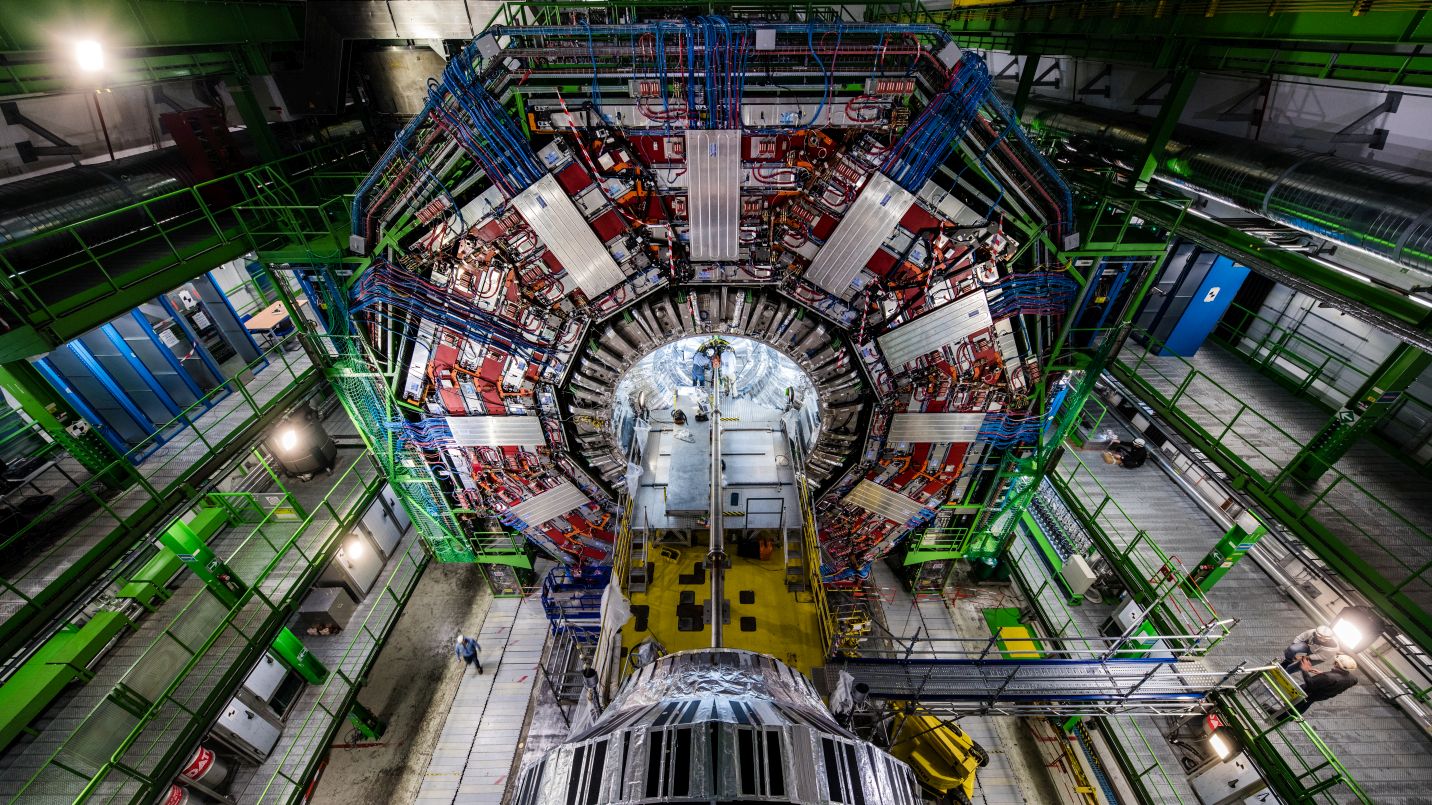
How did the universe come into existence? Why do the fundamental building blocks of matter behave the way they do? What does dark matter, which makes up the majority of the mass in the universe, consist of? Using the large CMS particle detectors at CERN in Geneva (Switzerland) and Belle II at KEK in Tsukuba (Japan), scientists of Karlsruhe Institute of Technology (KIT) are trying to find answers jointly with international partners. The Federal Ministry of Education and Research (BMBF) will fund the projects at KIT with EUR 8.2 million over the next three years. The funding period starts on July 01, 2024, strengthening the further development of experimental particle physics.
In order to answer the elementary questions about the smallest building blocks of matter, the largest experimental facilities ever built are required: huge particle accelerators and detectors that record the traces of particle collisions. Also needed is an efficient infrastructure to process, store, and deploy the gigantic amounts of data. The Compact Muon Solenoid (CMS) at the Large Hadron Collider (LHC), a particle accelerator of CERN, and the Belle II detector at the SuperKEKB accelerator of KEK are supposed to achieve this. KIT scientists have been involved in both projects right from the outset. With their work, they are constantly exploring the limits of what is technically feasible, and planning the further development of the experimental facilities in the long term. While ensuring the successful operation of the detectors and evaluating the collected data, they are simultaneously designing components for the next expansion stage of their experiments, and advancing the data infrastructure with foresight. By developing new concepts, the researchers also have novel detectors for the future in mind.
These projects, which are mainly promoted by the Institute of Experimental Particle Physics (ETP) at KIT with partners from Electronics and Information Processing Technology departments, will be funded by the BMBF with a total of EUR 8.2 million over the next three years. "The financial resources are crucial for continuing top-level research and gaining new scientific insights," says Professor Markus Klute, Head of ETP. "Thanks to this support from the BMBF, experimental particle physics is well positioned to face the challenges ahead."
Further Development of the Experiments
The funding will enable the working groups at KIT to measure the Higgs boson more precisely than ever before based on the CMS data and to find answers to the most urgent questions arising in the current understanding of the structure of matter. Research by the Karlsruhe scientists within the Belle II experiment aims to find previously unknown Dark Matter particles and seek explanations for the asymmetry of matter and anti-matter. "Existing methods will no longer be adequate to filter out the rare events we are interested in from the millions of collisions per second," says Professor Torben Ferber, Head of the Belle II working group at ETP. His team is therefore working with groups from the Electronics and Information Processing Technology departments to develop ultra-fast algorithms aimed at increasing the performance of the particle detectors.
Processing Large Amounts of Data with GridKa
The grid computing center GridKa at KIT plays a key role in the processing and analysis of large amounts of data in particle physics. In order to cope with these data volumes in the future, KIT scientists are striving to improve the IT infrastructure. "In view of the global shortage of resources and the growing awareness of the need to use existing resources as carefully as possible in all areas, the focus of our development is on optimizing all processes in terms of their energy efficiency and sustainability," says Professor Günter Quast, who is contributing to these developments with his ETP working group.
Future Detectors
In the clean rooms and laboratories at KIT, components of the future CMS detector are already being built today. They will be used in CERN's revised accelerator complex from 2029. "We are also developing new concepts for silicon-based detectors together with groups from the Electronics department, and researching their applicability for the next generation of particle accelerators," explains Professor Ulrich Husemann, who is responsible for detector development at ETP, thereby continuing the decades-long tradition of KIT research in this field.
More about the Institute of Experimental Particle Physics
Details about the KIT Center Elementary Particle and Astroparticle Physics
Being "The Research University in the Helmholtz Association", KIT creates and imparts knowledge for the society and the environment. It is the objective to make significant contributions to the global challenges in the fields of energy, mobility, and information. For this, about 10,000 employees cooperate in a broad range of disciplines in natural sciences, engineering sciences, economics, and the humanities and social sciences. KIT prepares its 22,800 students for responsible tasks in society, industry, and science by offering research-based study programs. Innovation efforts at KIT build a bridge between important scientific findings and their application for the benefit of society, economic prosperity, and the preservation of our natural basis of life. KIT is one of the German universities of excellence.






